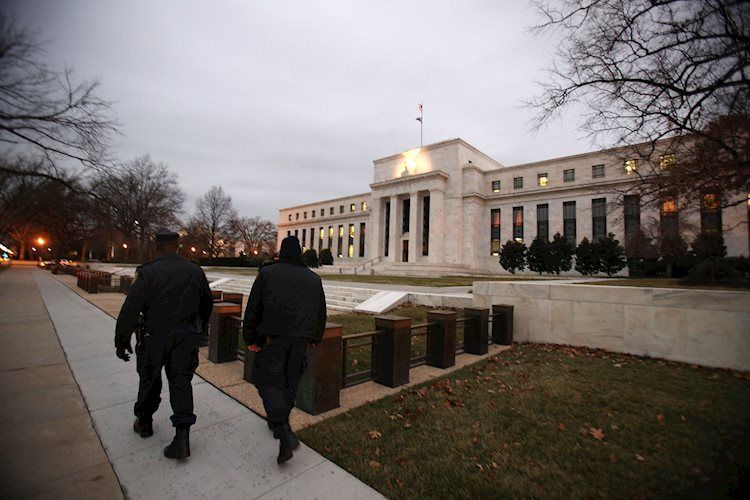On Wednesday, March 21, the Federal Reserve announced a 25 basis point hike in its benchmark interest rate, bringing it to a range of 1.50-1.75%. While this move was largely expected, it followed weeks of market volatility and uncertainty regarding just how many rate hikes will come this year.
Despite the hike, the tone of the Fed’s announcement was noticeably dovish, indicating that they may not be as committed to further increases as previously thought. In their statement, the Fed acknowledged that recent developments may tighten credit conditions and weigh on the economy. This language suggests that the central bank is keeping a watchful eye on potential risks and may be more cautious with monetary policy going forward.
According to economists at RBC Economics, this could mean that the Fed is getting closer to the so-called “terminal” point for rate hikes, where they reach a neutral level that neither stimulates nor restricts economic growth. While the central bank has indicated that some additional policy tightening may be necessary, the median dot plot still points to just one more hike for the remainder of the year.
The Fed’s decision comes amid a backdrop of rising inflation, low unemployment rates, and a strong U.S. economy. While these factors would typically warrant tighter monetary policy, the central bank is also grappling with global economic uncertainty, including trade tensions and geopolitical risks.
In light of these factors, the Fed’s announcement was closely watched by investors and economists alike, as it offered insight into the central bank’s thinking and future plans. Here’s a closer look at some of the key takeaways from the Fed’s latest decision.
The Case for a Rate Hike
In recent months, there has been growing chatter among investors and analysts that the Fed would need to raise interest rates to keep inflation in check. In fact, the markets had been pricing in at least three rate hikes this year, and some even suggested that a fourth could be on the table.
The Fed’s decision to hike rates this week is in line with this thinking. By raising rates, the central bank is able to tap the brakes on economic activity and prevent inflation from getting out of control. It also sends a signal to investors and borrowers that the cost of borrowing is going up, which can help to cool down demand and reduce the risk of overheating.
The Fed’s statement also highlighted the strength of the U.S. economy, noting that “economic activity has been rising at a moderate rate, job gains have been strong, and the unemployment rate has remained low.” These factors suggest that there is still room for tighter monetary policy to keep the economy from overheating, which could lead to a recession down the line.
The Case Against a Rate Hike
However, there are also several reasons why some analysts are skeptical about the need for further rate hikes. For one, inflation has been slow to pick up steam, despite low unemployment rates and a strong economy. This suggests that there may be some structural factors keeping prices in check, such as globalization, technological advances, and aging populations.
Additionally, there are concerns about global economic growth and stability. For example, the recent tariffs announced by President Trump could lead to higher prices and reduced trade, which could in turn weaken the economy. There are also geopolitical risks, such as the ongoing tensions with North Korea, that could have negative implications for the global economy.
Given these uncertainties, some economists argue that the Fed should be more cautious with monetary policy, and avoid over-tightening the reins on the economy. This could mean delaying further rate hikes, or at least taking a more gradual approach.
The Dovish Tone of the Fed’s Announcement
Against this backdrop, the Fed’s decision to hike rates while adopting a dovish tone may come as a relief to some investors. The central bank’s statement acknowledged that recent developments may weigh on the economy, but also emphasized that inflation is still expected to rise in the medium term. This suggests that the Fed sees some risks on the horizon, but is not overly concerned about them.
Perhaps most significantly, the median dot plot still points to just one more rate hike this year, indicating that the central bank is not planning to aggressively tighten monetary policy anytime soon. This could help to calm investor fears and prevent an overreaction in the markets.
Conclusion
Overall, the Fed’s decision to hike rates this week was largely expected, but the dovish tone of their announcement may have come as a surprise to some. While the central bank sees inflation rising in the medium term, they are also aware of the risks and uncertainties facing the global economy. As a result, they may be more cautious with monetary policy going forward, and may not be as committed to further rate hikes as previously thought.
In the coming weeks and months, investors will continue to monitor the Fed’s statements and actions closely, looking for clues about their plans for the future. While there are still many uncertainties in the global economy, the Fed’s actions will play a key role in shaping the direction of monetary policy and the markets as a whole.


